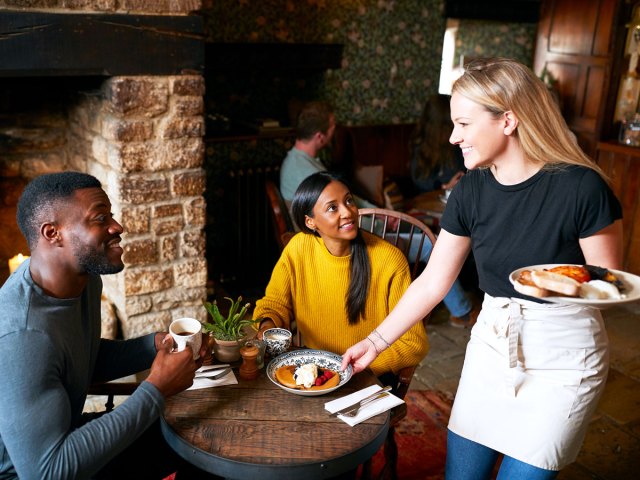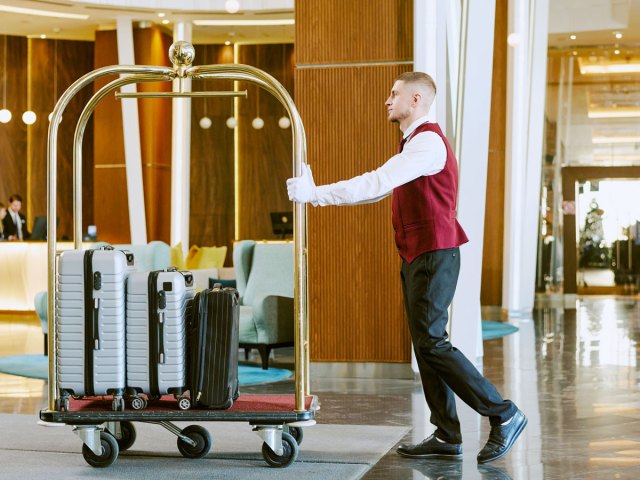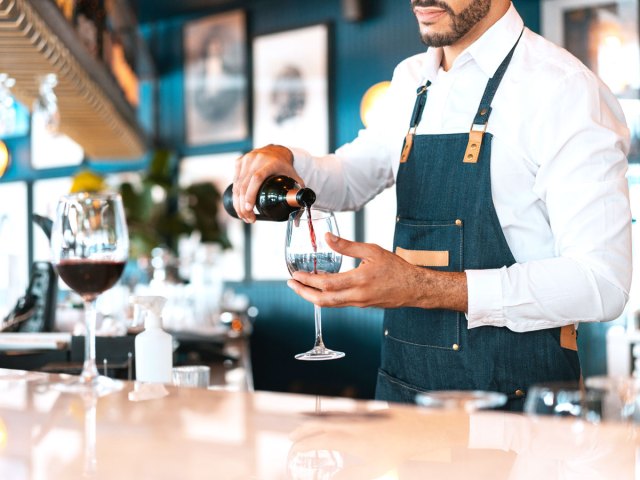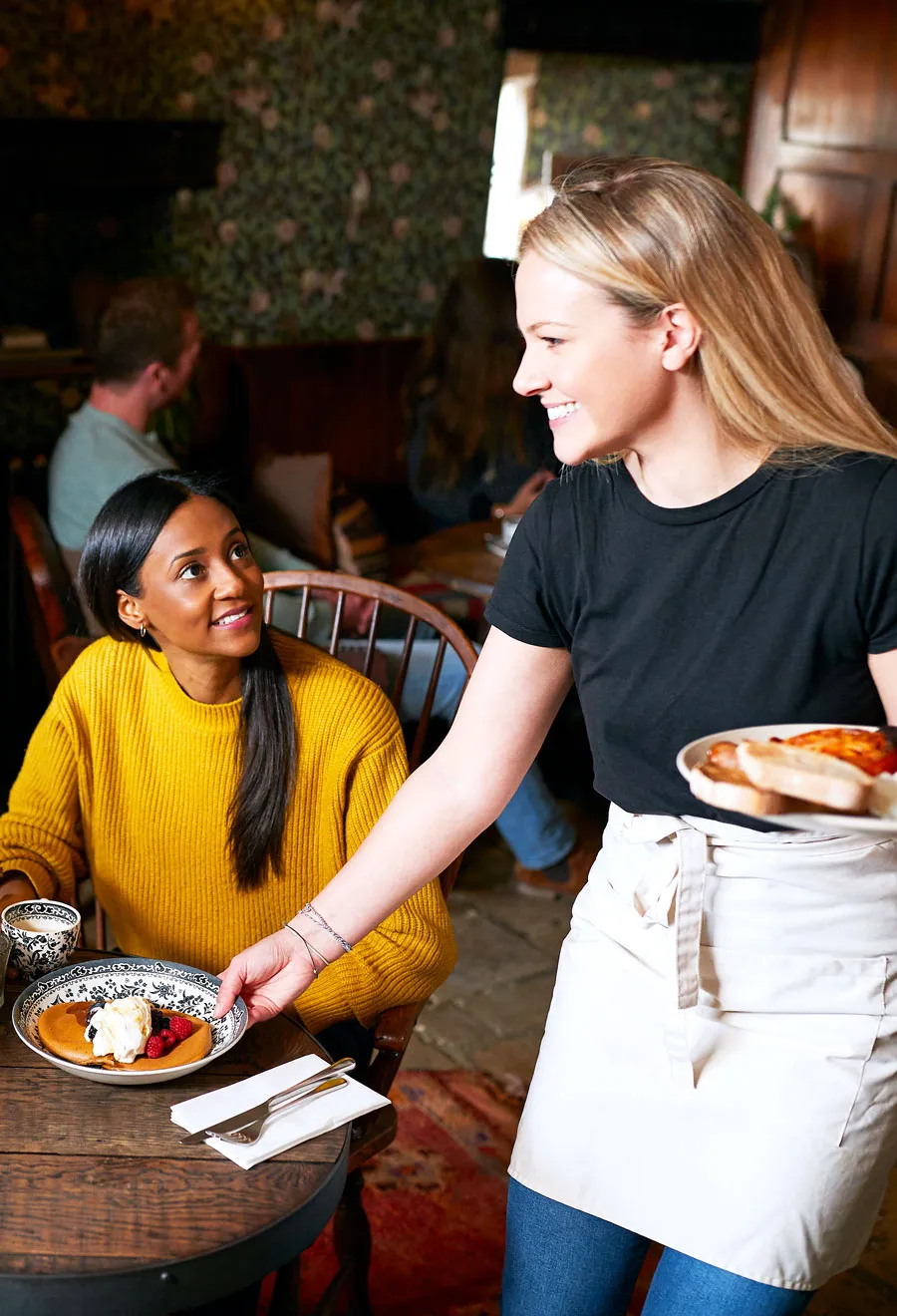Tipping is second nature for many Americans, but once outside the United States, the rules can change. In some countries, like Japan, tipping is actually considered rude. In others, a gratuity might be appreciated but isn’t expected. Elsewhere, tipping works much the same as it does at home. Whether you’re dining at a cafe in Paris, catching a cab in Mexico City, or getting help with your luggage in Rome, knowing when and how much to tip can go a long way toward respectful travel and mutual kindness. Here’s how much to tip in five of the most popular countries for U.S. tourists.
Mexico

Adding a tip (known as la propina) in Mexico is largely similar to tipping in the U.S., especially in restaurants and hotels where service workers often depend on gratuities to supplement generally lower wages. According to the travel experts at Frommer’s, it’s useful to pre-budget for tips and keep small bills on hand, ideally in pesos, the local currency.
Restaurants and Bars:
- It’s customary to tip servers around 15% of the bill, but you can increase that amount to 20% for exceptional service.
- Note that a value-added tax or “IVA” (a 16% government tax) will also often appear on your bill, but this is usually already worked into the prices you see on the menu and not a service charge.
- Expect to tip your bartender around 20 pesos (approximately $1 USD) per drink, or 10% to 20% of the tab.
- Smaller street food vendors will often have a tip jar available, and while tipping isn’t mandatory, leaving a few pesos is appreciated.
Hotels and Resorts:
- A customary tip for housekeeping staff is about 40 to 60 pesos ($2 to $3 USD) for each day.
- If you have hotel staff helping you with luggage, they should receive the same amount per bag, according to Frommer’s.
- Tipping policies vary at different all-inclusive resorts, so make sure to check your resort’s policy in advance. Often, gratuities will be included in the cost of your package, and staff are not permitted to accept tips. But the lines can be blurry on whether you can or should leave a few extra dollars even with these policies in place. If allowed, aim to tip waitstaff and bartenders 10% to 15%, and housekeeping staff similar to standard hotel rates.
Taxis:
- Tipping for standard taxis isn’t common for locals, but if a driver helps with luggage, you can offer 10 to 20 pesos (up to $1 USD) per bag, or simply round up the fare.
- For Uber or other app-based rides, you’ll have the option to tip through the app.
Other Considerations:
- If you plan to head out on excursions while on vacation in Mexico, feel free to tip your tour guide 15% to 20% of the cost of the outing.
Canada

Tipping in Canada is similar to tipping in the U.S. — it’s widely expected in restaurants, for personal services, and in other hospitality settings. Recently, digital payment screens have made tipping culture feel much more prominent, sometimes suggesting gratuities in places where tipping was once rare, including fast-food and coffee chains. Of course, tipping isn’t required, but if you’re in a situation where you’d like to add a gratuity, 15% to 20% is a solid baseline in most cases.
Restaurants and Bars:
- The standard for tipping at sit-down restaurants in Canada is 18% to 20% of the pretax total. You may be prompted for up to a 25% tip in larger cities such as Toronto, but it isn’t necessarily expected.
- For drinks grabbed at a bar, $1 CAD (about 75 cents USD) per drink or 10% to 20% of the bar tab is customary.
- If you’re ordering takeout or a treat at a cafe or bakery, Canada’s CTV News suggests a 10% to 15% tip.
Hotels:
- If you have bellhops helping you out with luggage, tipping them $2 to $3 CAD per bag is appreciated.
- Expect to tip housekeeping between $2 to $5 CAD per day — it helps to leave it daily as you likely won’t get the same staff member every day.
Taxis:
- In taxis and in rideshares, the etiquette experts at CTV News suggest rounding up your fare, or tipping 10% to 15% (especially if you have bags you need help with). App-based services such as Uber will also usually give you the option of a higher amount.
United Kingdom

In general, tipping in the U.K. is less expected (and if you do tip, it’s more modest) than in North America, but it’s still customary in hospitality situations. Another difference is that service charges are sometimes added automatically, particularly in restaurants, so it’s worth scanning your bill before to avoid double-tipping.
Restaurants, Bars, and Pubs:
- A 10% to 15% tip is standard at sit-down restaurants in the U.K. However, many places add a service charge (usually around 12.5%) — you’re not obligated to tip on top of that, but you may want to add extra for exceptional service.
- The service charge amount is set by individual businesses, and while it can be declined, refusing to pay one is rare and often seen as impolite unless the service was truly subpar.
- Historically, tipping at U.K. bars and pubs has not been common, but recently, thanks to the proliferation of digital payments, more establishments are either adding 10% service fees to the tab or prompting for a tip. Ultimately, tipping is still voluntary.
Hotels:
- While tipping at hotels isn’t expected, guests may choose to do so at their discretion, especially for housekeeping and bellhops. A standard gratuity is around £2 to £3 GBP (or $3 to $4 USD) per day.
- In hotel restaurants, if no service charge has been added to your bill, it’s customary to tip between 10% and 15%.
Taxis:
- It’s considered polite to round up your taxi fare in the U.K. to the nearest pound, or to tip around 10% to 15% of the total fare.
- If you have a longer trip or your driver helped with luggage, consider tipping a bit more — up to about £5.
Italy

In Italy, tipping is not necessarily required, but it is, of course, appreciated — especially in places that regularly cater to tourists. While most Italian service workers receive a higher salary than their counterparts in North America, it hasn’t necessarily kept up with the cost of living over the years. Many establishments will also add fixed service fees to the bill, though that money doesn’t always go into servers’ pockets.
Restaurants, Bars, and Cafes:
- When dining in Italy, there will sometimes be a service charge, or servizio, included in your bill. This means the gratuity is already factored in, and there is no need to tip.
- Another charge that may appear is a coperto, or a cover charge; this applies to bread, water, olives, or other table settings. Cover charges most often range from €1 to €3 euros (about $1.50 to $3.50 USD) but are not considered a tip.
- If no service charge is listed, leaving around 10% to 15% as a tip is considered a nice gesture. Often, even when the charge is included, it’s common to round up or leave €5 to €10 per person at a sit-down dinner.
- At informal eateries, such as trattorias, rounding up to the nearest euro is considered sufficient.
- Tips aren’t expected at bars or cafes, but you may wish to leave a small amount of change (around €0.50 to €1) at the counter. If you’re receiving table service, you can tip around €2 to €3.
Hotels:
- A service charge of 15% to 20% is often included in hotel stays in Italy, especially in tourist-heavy areas; additional tipping is not expected.
- However, consider leaving an additional €1 to €2 per day in your room for housekeeping.
- Bellhops and porters will appreciate €2 to €3 per bag if helping with luggage.
Taxis:
- A standard tip for taxi drivers in Italy is around 10% to 15% of the fare, but it’s also common to just round up to the nearest euro note. So, if your fare is €12, you might pay them €15 as a simple way to say thanks.
Other Considerations:
- Frommer’s suggests not to skip out on the gratuity for one service in particular when traveling in Italy: tour guides. A good rule of thumb is to tip about €5 per person for a half-day tour and around €10 per person for a full day. If your guide went above and beyond, don’t hesitate to tip a little extra.
France

Tipping in France is appreciated but not expected in the same way as it is in the U.S. Prices at restaurants, salons, and hotels typically include service fees, but leaving a few euros for excellent service is always a thoughtful gesture. Note that tips are best given in cash, as many credit card machines or slips don’t offer a tipping option.
Restaurants and Bars:
- Tipping in France isn’t required, since French restaurants, bars, and cafes must legally include a 15% service charge (service compris) on all bills. That said, it’s still common to leave a bit extra — rounding up or leaving a couple of euros — as a gratuity.
- If you’re grabbing an espresso or a glass of wine from a counter and paying up front, tipping some small change or rounding up is a nice touch, but it’s not required.
Hotels:
- Modest tips for hotel staff, especially in more tourist-heavy areas, are appreciated — €1 or €2 per bag for bellhops, and €2 to €4 per day for housekeeping.
- If a concierge goes out of their way to help you with reservations or recommendations, €5 to €10 is considered a thoughtful thank-you.
Taxis:
- While tipping taxi drivers isn’t required in France, it’s common to round up the fare to the nearest euro. For longer trips or help with bags, you can add an extra €1 or €2.
Other Considerations:
- Here’s a situation we don’t often encounter in the U.S.: If an usher shows you to your seat in a theater or music venue while you’re visiting France, it’s customary to tip them around €2.
More from our network
Daily Passport is part of Inbox Studio, which publishes content that uplifts, informs, and inspires.
















